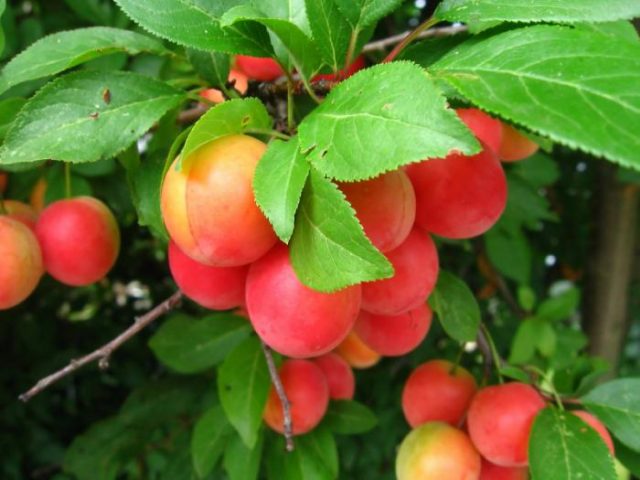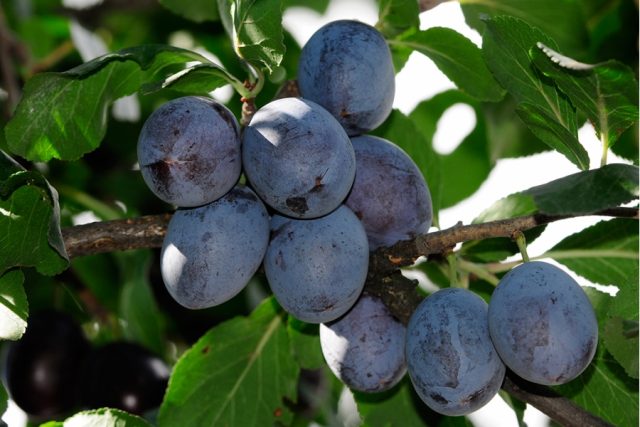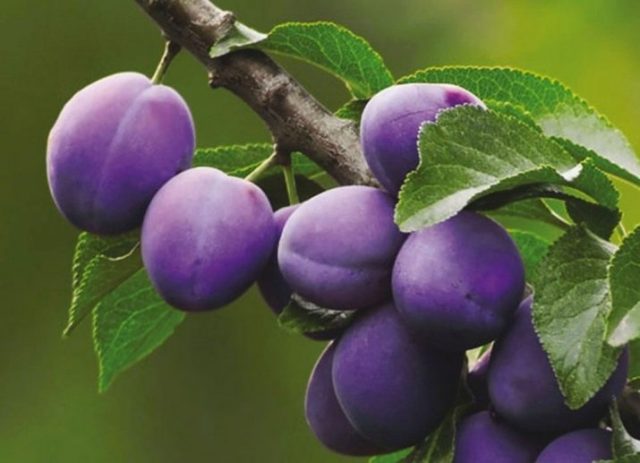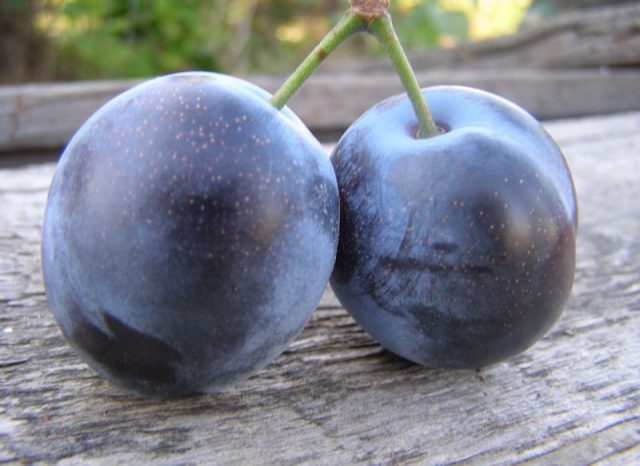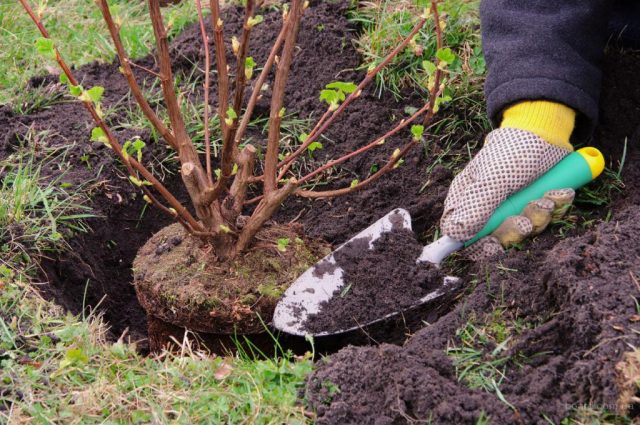Content
Popular plum fruit trees have one drawback - they are extremely sensitive to growing conditions. Plum cherry hybrid has become one of the most useful results of selection of different species - it combines the advantages of plums and cherries and is practically devoid of disadvantages.
General description of the plum-cherry hybrid
A mixture of plums and cherries called SVG is a garden plant that brings its first harvest as early as 2 - 3 years of age. The plum-cherry hybrid successfully combines the positive qualities of plums and cherries - it gives large fruits, sweet fruits, but at the same time it is distinguished by high resistance to frost and damping, beautiful appearance and good immunity to diseases.
Breeding history
The plum-cherry hybrid was first developed in the United States. The progenitors for the varieties Opata, Beta, Sapa were the Japanese plum and the American Bessey cherry.
As for Russian breeding, the breeder A.S. Tolmacheva in Krasnoyarsk were bred SVG Chulyp, Pchelka and Zvezdochka, breeder N.N. Tikhonov in Primorye - SVG Avangard, Utah and Novinka, the progenitors of which were the same Bessey cherry and Ussuriyskaya plum. The plum-cherry variety Lyubitelsky was obtained by the breeder V.S. Putov at the Siberian Research Institute of Horticulture, several fruit plants were bred in the Crimea.
Characteristics of plum hybrids
Trees of plum-cherry hybrids are notable for their small height. Most often they grow up to only 1.5 m, in rare cases they can reach 2 m. This makes it easier to care for plants and collect fruits. The crown of hybrids can have different shapes - both creeping and pyramidal, but the leaves are always large and green, with jagged edges.
There are many hybrid varieties, and each one has its own unique characteristics. But some points are the same for all SVGs and can characterize a hybrid culture as a whole.
- SVG have increased frost resistance - this is the quality they take from cherries. The roots of plum-cherry trees are always branched and powerful, so low temperatures and drought are easily tolerated by these trees.
- Plum-cherry hybrids perfectly tolerate late spring frosts, which are dangerous for common cherries and plums.
- Fruiting of almost all plum-cherry varieties occurs late - in August or closer to autumn.
Resistance of the hybrid culture to diseases
Plum cherry trees are not too susceptible to diseases and pests. However, they also have weak points. In particular, moniliosis is dangerous for plum and cherry plants - a disease in which flowers, leaves and shoots suddenly begin to dry out.
In order to avoid monilial burns, plum-cherry hybrid trees are usually treated with Bordeaux liquid before the onset of the flowering period. In summer, the procedure can be repeated. If symptoms of the disease do appear, all affected parts of the plum-cherry plant must be cut off.
Pollination of hybrids
Plum cherry varieties are self-fertile.Another feature is that not any varieties of plums or cherries are suitable for the role of pollinators, but only similar hybrids of SVG or Besseya's cherry, with which the breeding of many hybrid varieties began.
Fruiting SVG
Plum-cherry hybrids bear fruit much later than ordinary cherries or plums - at the end of August or even at the beginning of autumn. But the first harvest of plum-cherry shrubs will give already for 2 - 3 years, depending on the specific variety, and the harvests will be annual. SVG hybrids bear fruit very abundantly, several tens of kilograms of berries are harvested from one plant.
In appearance, the fruits of the tree are more like plums. However, there are both plum and cherry notes on the palate. The berries may differ in color depending on the variety - different plum and cherry plants produce yellow-green, red, maroon fruits.
Scope of the fruit
You can use berries for culinary purposes in any form. They are pleasant to eat fresh, freshly harvested from wood, they can also be used to prepare drinks and homemade desserts. Hybrids are versatile and suitable for free use in the kitchen.
In which regions can plum-cherry hybrids be grown
Plum and cherry trees take root well in almost any climatic conditions. They are well suited for breeding in the Central region, grow well in the southern regions of the country. But of course, gardeners especially highly appreciate the plum-cherry hybrid in Siberia - the plants perfectly tolerate northern frosts.
Advantages and disadvantages of SVG
The benefits of hybrid trees are clear. These include:
- frost resistance;
- good drought tolerance;
- stable high yield and quick first fruiting;
- pleasant fruit taste.
The plum-cherry shrub has almost no drawbacks - especially when compared with ordinary plums or cherries. The disadvantages can be attributed only to self-infertility - pollinators are required to obtain crops.
Plum-cherry hybrid: varieties
If you are interested in the description of SVG varieties, then there are several main varieties.
- Opata plum cherry hybrid - a sprawling low plant up to 2 m, begins to bear fruit at 3 or 4 years of life, yields a crop of yellow-green large berries weighing up to 20 g.
- SVG Beta - a low shrub up to 1.5 m, one of the highest-yielding. Fruits in rounded maroon berries, with an average weight of 15 g or slightly more.
- Plum-cherry hybrid Gem - a variety with an early yield, yields yellowish-green sweet fruits up to 20 g for 2 years of growth. Reaches a height of 2.3 m, differs in the pyramidal shape of the crown.
- Plum-cherry hybrid Mainor - another early-yielding variety of Canadian origin with 2-year fruiting, weather-resistant. Brings large berries of maroon color weighing up to 15, goes well with the Samotsvet variety as a pollinator.
- SVG Pyramidalnaya - a hybrid with a pyramidal crown, which is reflected in the name. Begins to bear fruit for the first time after 2 or 3 years, gives yellow-green berries weighing about 15 g.
- SVG Omskaya night - a very low variety, only up to 1.4 m in height. Brings the first crop at 2 years of life, gives fruits about 15 g in weight - dark, almost black.
- Plum-cherry hybrid Sapalta - medium-high variety with a rounded crown, with increased frost resistance, with purple sweet fruits.
- Plum-cherry hybrid Hiawatha - a medium-sized variety with a high crown, bears fruit with dark purple rounded fruits up to 20 g in weight. The berries of the plant taste sweet with a slight sourness.
- Plum-cherry hybrid Compass - a hybrid with late May flowering and very small red-brown fruits weighing up to 15 g.Reaches 2 m in height, tolerates droughts and freezing temperatures well.
Planting and caring for plum-cherry hybrids
Plum cherry trees can vary greatly in color, size and fruit flavor. At the same time, the planting of a plum-cherry hybrid and the rules of care are approximately the same and quite simple, which makes growing SVG pleasant for gardeners.
Landing rules
In order to successfully root a plum-cherry shrub, it is enough to adhere to the following simple rules.
- Planting plum and cherry shrubs is preferable in the spring - especially in the northern regions. This is due to the fact that even seedlings of frost-resistant hybrids are very sensitive to frost - and the first winter with an autumn planting may be too traumatic for them.
- The hybrid prefers sandy loam or loamy soil - just like ordinary plums and cherries. Excess moisture is especially dangerous for him - plum-cherry shrubs tolerate it worse than drought.
Plum cherry trees are planted as standard. A small hole is dug, about twice the size of the seedling roots, fertilizers are placed on its bottom. Next, the seedling is carefully placed in the center of the hole and sprinkled with soil, not forgetting to leave the root collar above the surface. 2 - 3 buckets of water are poured under the trunk, the moistened soil is mulched.
How to care for SVG
Caring for SVG - a plum-cherry hybrid - in general resembles caring for a plum, with the difference that the plum-cherry hybrid is much less whimsical to growing conditions.
- Watering drought-resistant trees is required only as needed. In the absence of natural precipitation, 3-4 buckets of water can be poured under the tree trunk once a month, if the drought occurred during the harvest period - once every 10 days.
- A young plum-cherry hybrid is allowed to be fed with potassium fertilizers in the summer. Before the onset of winter, it is recommended to throw organic fertilizers under the trunk. But with nitrogenous substances, you should be careful - they can provoke too rapid growth of shoots, which will negatively affect productivity.
- Pruning plum-cherry varieties require mainly sanitary - it is needed to get rid of dry branches, to thin out the crown. It is also recommended to pinch fast growing branches at the end of summer.
- Mulching is carried out immediately after planting - and before the onset of winter. This will protect the soil from freezing. Also, the ground around the trunk before cold weather can be covered with spruce branches.
How SVG reproduces
In order to increase the number of cherry-plum hybrids in your garden, you do not need to buy new seedlings. You can propagate existing hybrids - using cuttings or horizontal layers.
- In the first case, during the period of active growth in early summer, it is necessary to separate several shoots from the plum-cherry tree, cut off and keep in a root-forming solution, and then root in a greenhouse until autumn. With the onset of September, the seedlings are dug up and sent to storage in a closed shed - a full planting is carried out only after 2 years.
- When propagating horizontal layers, suitable branches are bent to the ground, fixed and sprinkled with soil. When the cuttings take root and are well established in the soil, they can be separated from the mother plant.
Conclusion
Plum-cherry hybrid is a very interesting option for summer cottage cultivation. Caring for it is required quite simple, and the tree gives fruits large, sweet and abundant.
Reviews of the plum-cherry hybrid
